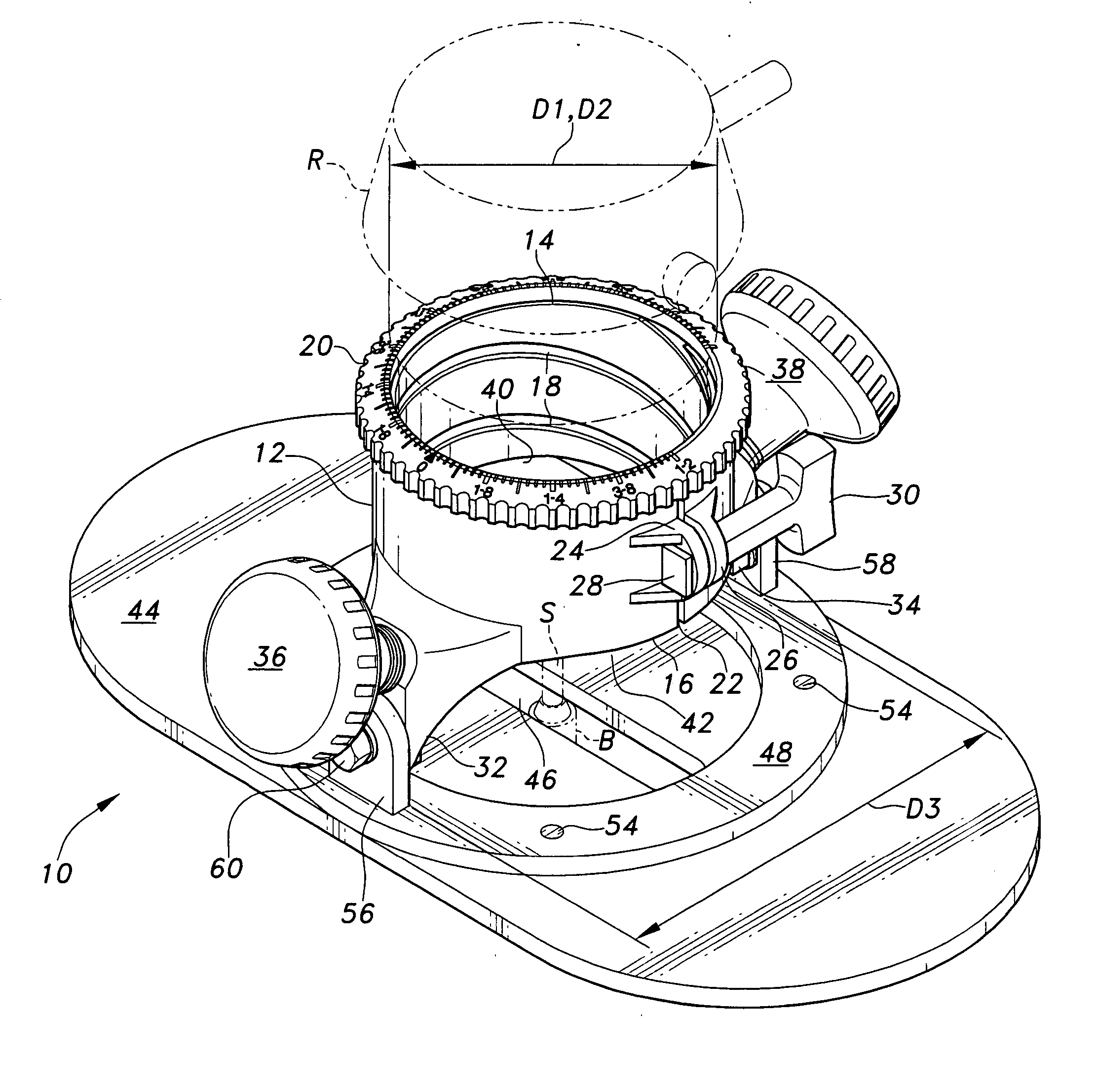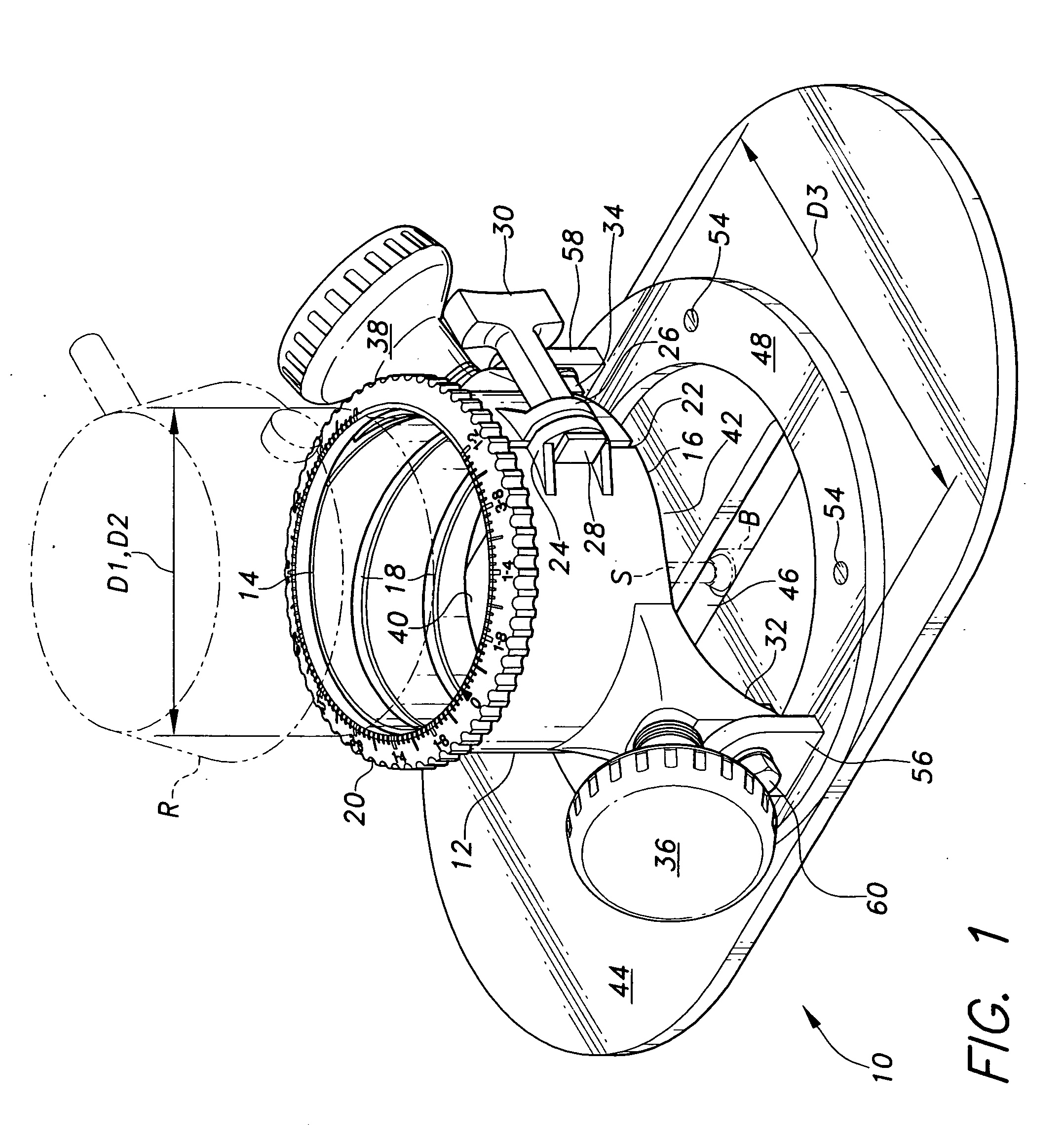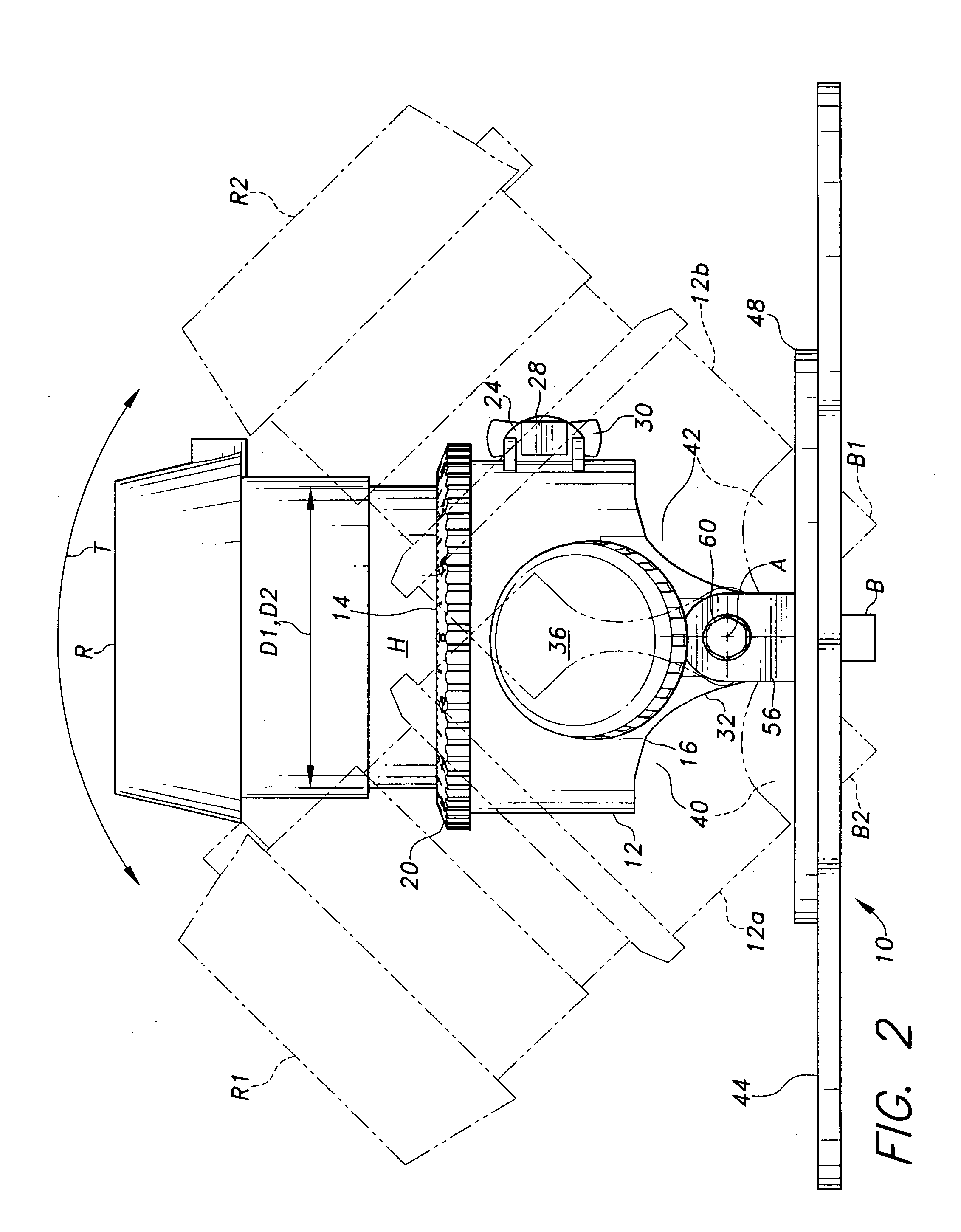Tilt base for a router tool
- Summary
- Abstract
- Description
- Claims
- Application Information
AI Technical Summary
Benefits of technology
Problems solved by technology
Method used
Image
Examples
Embodiment Construction
[0027] The present invention comprises a tilt base for a handheld router tool, enabling the base and the router secured therein to be tilted along a plane which passes through the centerline of the assembly and its output shaft. The term “handheld router tool” as used in the present disclosure, is not intended to indicate that the router itself is held by its outer case or housing when being used, but rather that the router is used with a freely manipulable, handheld base, as opposed to routers which are essentially permanently attached beneath a router table or the like with the cutting bit extending upwardly through an opening in the table. The tilt base of the present invention enables the operator of the device to adjust the angle of the router base relative to the underlying base plate to which it is pivotally attached, thereby allowing the operator to manipulate the router to cut or form beveled edges and other cuts where the cut face is not square with the base of the router ...
PUM
| Property | Measurement | Unit |
|---|---|---|
| Angle | aaaaa | aaaaa |
| Height | aaaaa | aaaaa |
| Transparency | aaaaa | aaaaa |
Abstract
Description
Claims
Application Information
 Login to View More
Login to View More - R&D
- Intellectual Property
- Life Sciences
- Materials
- Tech Scout
- Unparalleled Data Quality
- Higher Quality Content
- 60% Fewer Hallucinations
Browse by: Latest US Patents, China's latest patents, Technical Efficacy Thesaurus, Application Domain, Technology Topic, Popular Technical Reports.
© 2025 PatSnap. All rights reserved.Legal|Privacy policy|Modern Slavery Act Transparency Statement|Sitemap|About US| Contact US: help@patsnap.com



